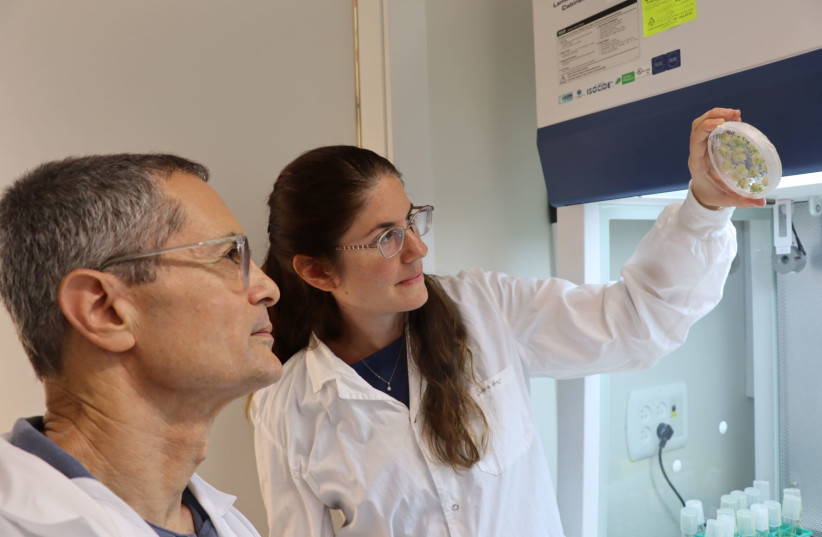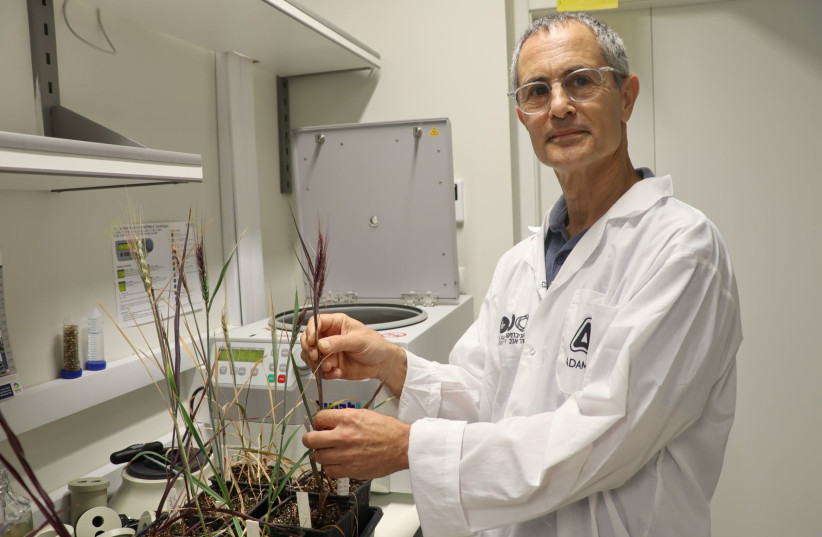An international research team that includes researchers from Tel Aviv University isolated three disease-resistance wheat genes from wild grasses, creating resistance to rust diseases that cause severe damage to global wheat yields.
For thousands of years, the process of wheat cultivation has reduced the diversity of wheat varieties, making modern wheat varieties more vulnerable than their predecessors to diseases, pests and climate change.
Today’s escalating climate crisis creates an urgent need to produce wheat varieties that can thrive in extreme environmental and climatic conditions while overcoming pests and diseases.
Breaking the breading process down:
Wheat supplies about a fifth of all calories and proteins consumed by humanity, and as much as half in some parts of the world.

The project was made possible by several technological innovations that drastically cut down the time needed to identify and isolate genes from wild plant species and transfer them into cultivated plants.
The three genes were isolated from plants preserved in Tel Aviv University’s Liberman Okinow Gene Bank of Wild Cereals at the Institute for Cereal Crops Research (ICCR). Two of the genes, providing immunity against stem rust disease, were isolated by an international team led by researchers from the UK.
The third gene, isolated by Tel Aviv University scientists, provides resistance against two different diseases – leaf rust and stripe rust – which are now spreading because of rising temperatures around the world.
Here's how this can help:
ICCR director Prof. Amir Sharon explained that the new technologies can be used to isolate genes for other beneficial properties as well. Transferred into the genome of cultivated wheat, such genes will serve to generate better wheat varieties that produce higher yields and are resistant to diseases, pests and harsh environmental conditions.
“Just as each of us carries only a small part of his/her grandparents’ genes, cultivated wheat contains only a remnant of its ancient ancestors’ genetic heritage. Since wheat first originated in our part of the world, wild cereals growing in our region are the progenitors of cultivated wheat, still carrying a rich variety of genetic traits that can be used to develop improved wheat varieties,” explained Sharon.
“Just as each of us carries only a small part of his/her grandparents’ genes, cultivated wheat contains only a remnant of its ancient ancestors’ genetic heritage. Since wheat first originated in our part of the world, wild cereals growing in our region are the progenitors of cultivated wheat, still carrying a rich variety of genetic traits that can be used to develop improved wheat varieties.”
Institute for Cereal Crops Research director Prof. Amir Sharon
“Certain traits of wild plants have already been incorporated into cultivated wheat over the years, but this great genetic potential remained mostly untapped, since – until recently – it took more than a decade to isolate a single gene,” he added.

“Certain traits of wild plants have already been incorporated into cultivated wheat over the years, but this great genetic potential remained mostly untapped, since – until recently – it took more than a decade to isolate a single gene,” he added.
How much wheat does Tel Aviv University have?
TEL AVIV UNIVERSITY’S gene bank includes more than 17,000 seeds of 20 different species of wild cereals that have been collected in Israel over the past 50 years.
“This collection is unique because of the large number of species related to cultivated wheat and because a large portion of the plants preserved in our gene bank were collected in natural habitats that no longer exist due to rapid urban development in Israel,” Sharon said.
“Essentially, the collection serves as a safe box for genes needed to create new, improved varieties of wheat that will give humanity larger crops and meet the challenges of climate change. The new technologies are the key to the safe box; they enable us to identify and extract the needed genes quickly and incorporate them into cultivated wheat,” he added.
"The collection serves as a safe box for genes needed to create new, improved varieties of wheat that will give humanity larger crops and meet the challenges of climate change. The new technologies are the key to the safe box; they enable us to identify and extract the needed genes quickly and incorporate them into cultivated wheat."
Institute for Cereal Crops Research director Prof. Amir Sharon
“The collection serves as a safe box for genes needed to create new, improved varieties of wheat that will give humanity larger crops and meet the challenges of climate change. The new technologies are the key to the safe box. They enable us to identify and extract the needed genes quickly and incorporate them into cultivated wheat.”
With the support of the Agriculture Ministry’s chief scientist and the Israeli Center for Genome Editing in Agriculture, Tel Aviv University has established a center for wheat transformation and genome editing at ICCR.
“This is an important milestone, enabling us, for the first time, to perform effective wheat transformation here in Israel,” Sharon said.
The university team is also collaborating with researchers in Israel and around the world to isolate genes for other beneficial traits.
“We work with researchers from Ben-Gurion University of the Negev in Beersheba who recently isolated pest-resistance genes from wild wheat, and in our own institute, we identified a new gene in wheat progenitors that may provide endurance in an arid climate.”
Major advances have also been made in biotechnology, specifically in technologies for gene transfer and genome editing. They make it possible to transfer new genes to crop plants and to introduce changes into existing wheat genes. ICCR implements these new technologies, offering services of wheat gene transformation and genome editing to researchers in other institutes, as well as commercial companies, concluded Sharon.
Dr. Arava Shatil Cohen, head of the wheat transformation unit, noted, “With these technologies, we can implant new genes and use genome editing methods to give wheat new properties. We use our systems to promote research at ICCR and also help companies and researchers from other institutions who wish to use this technology.”
